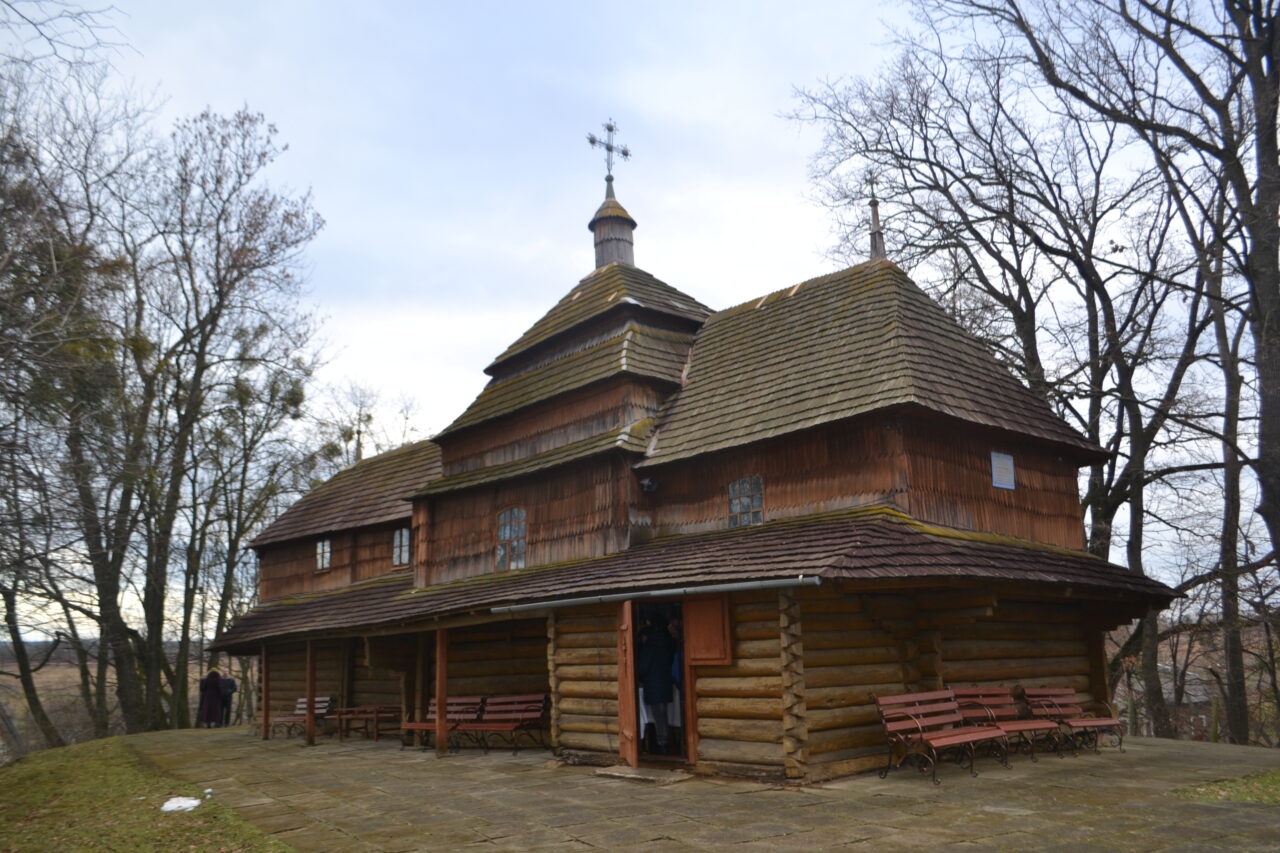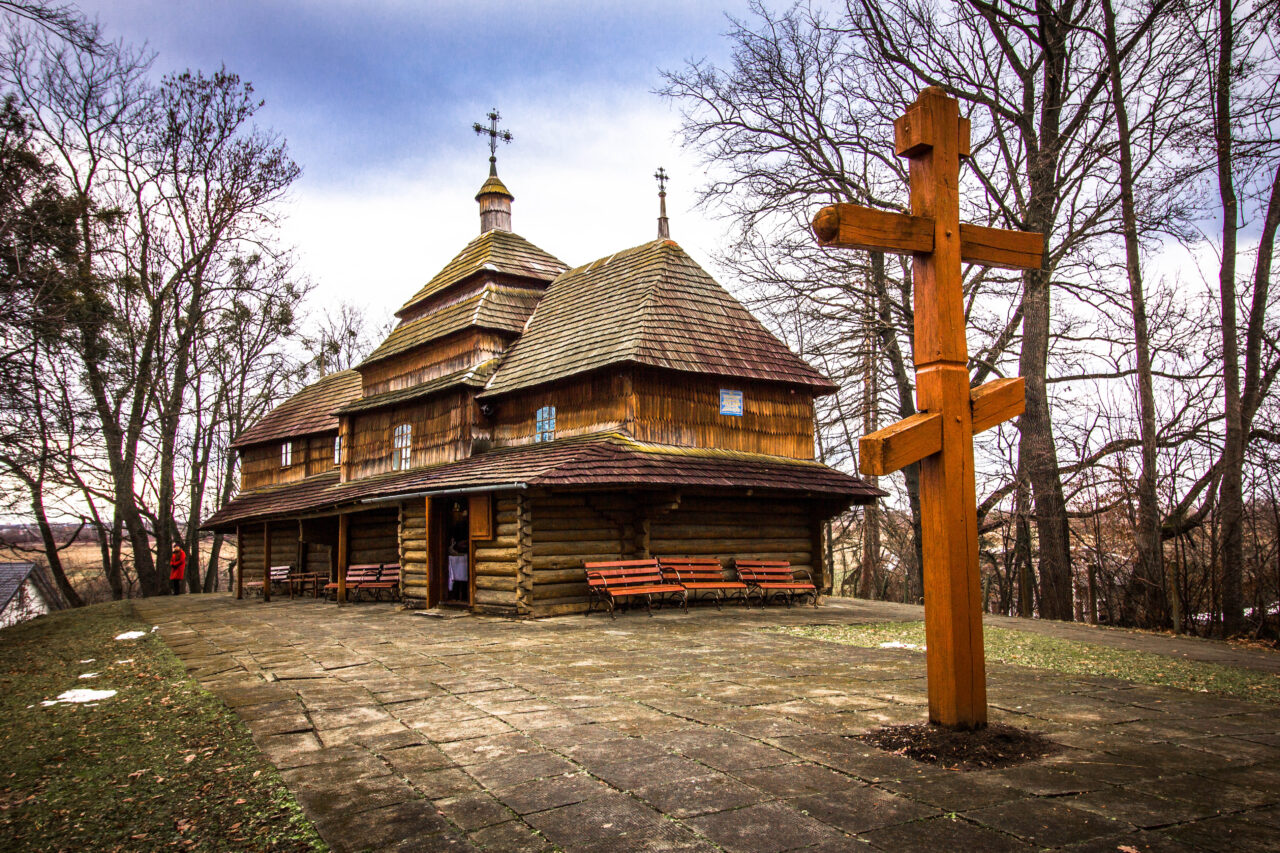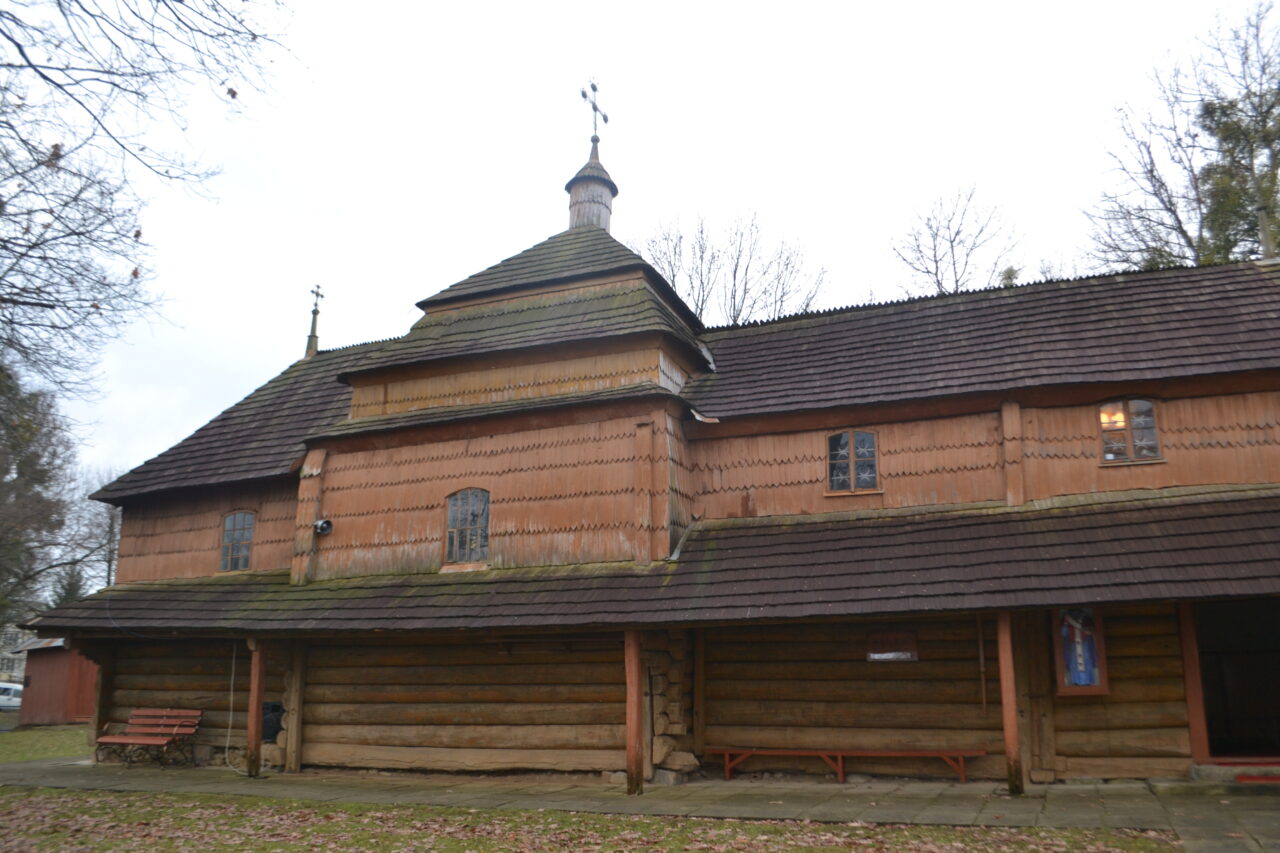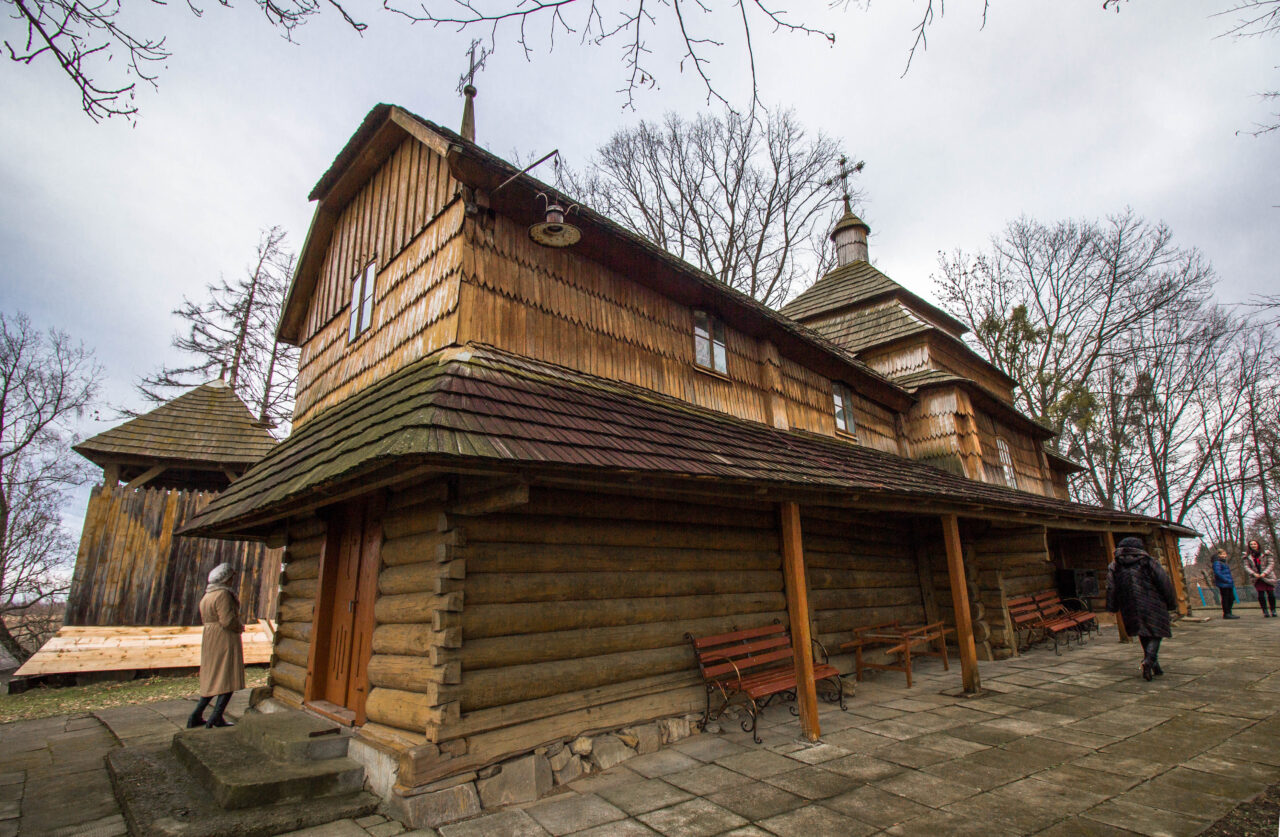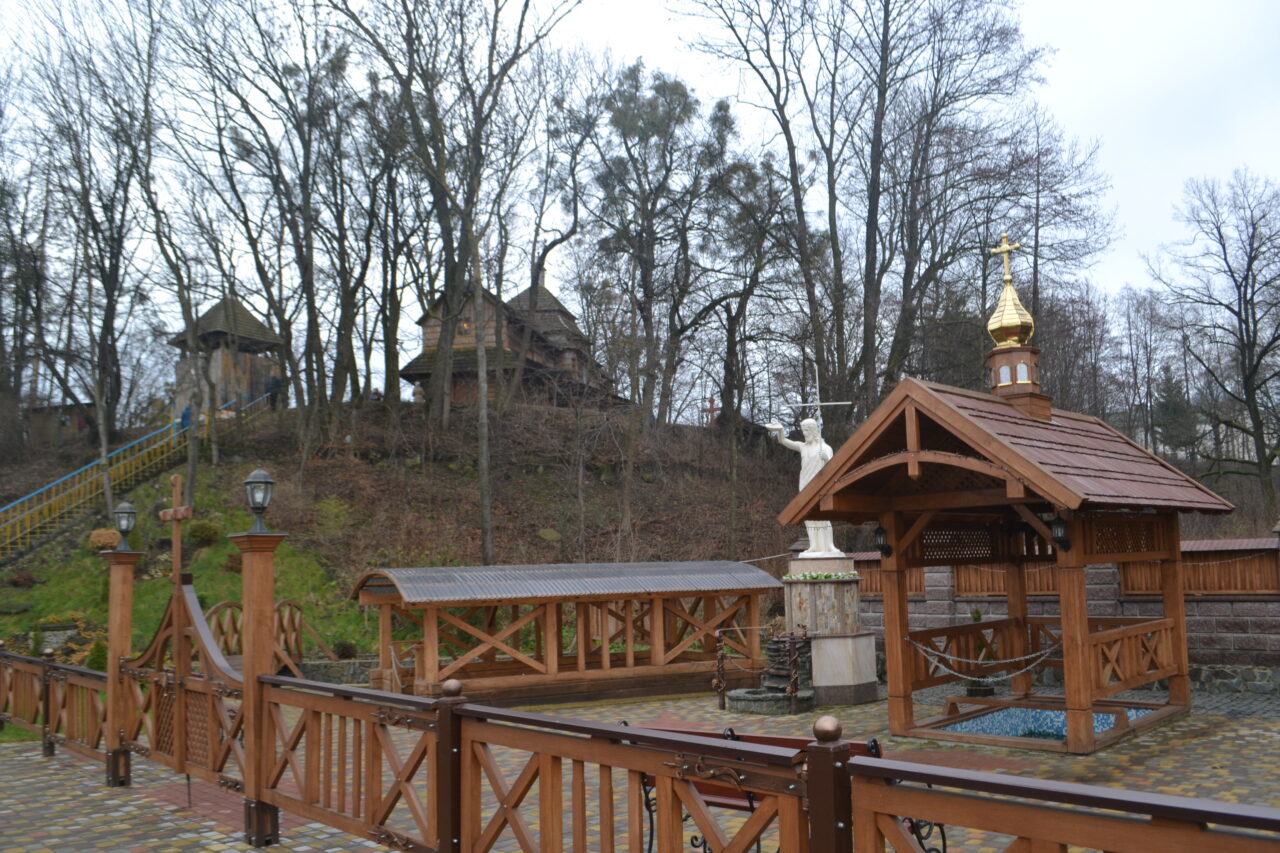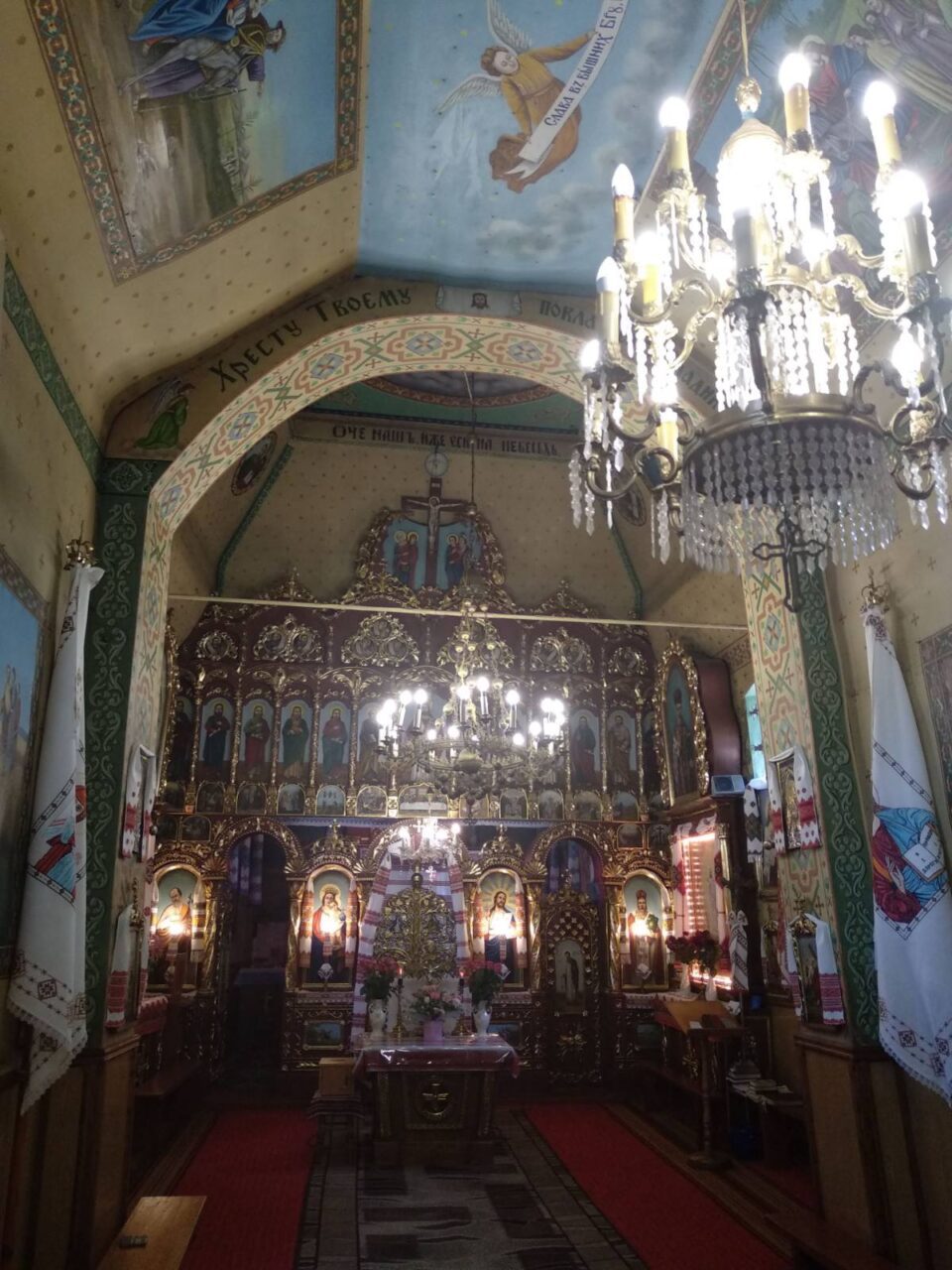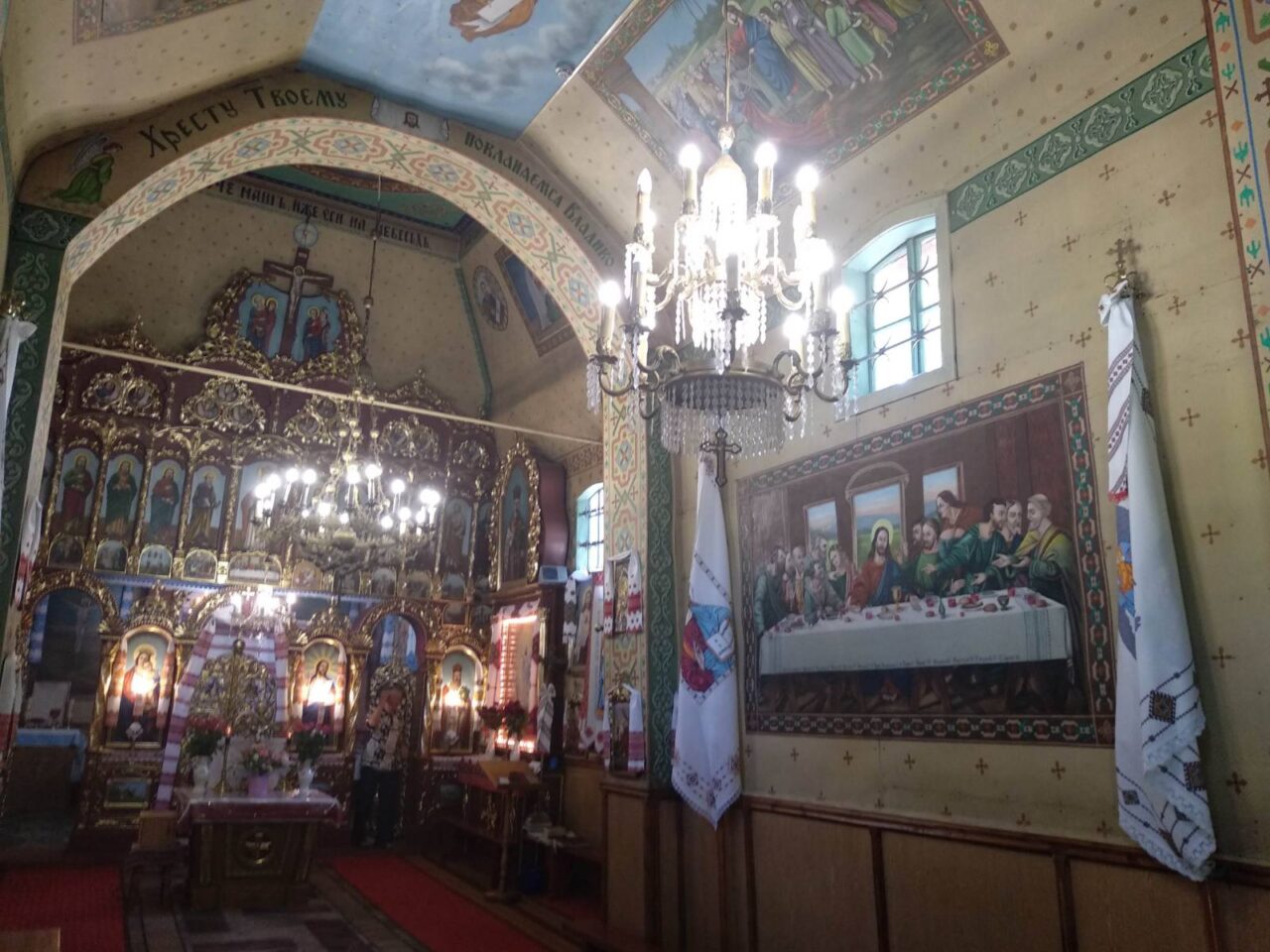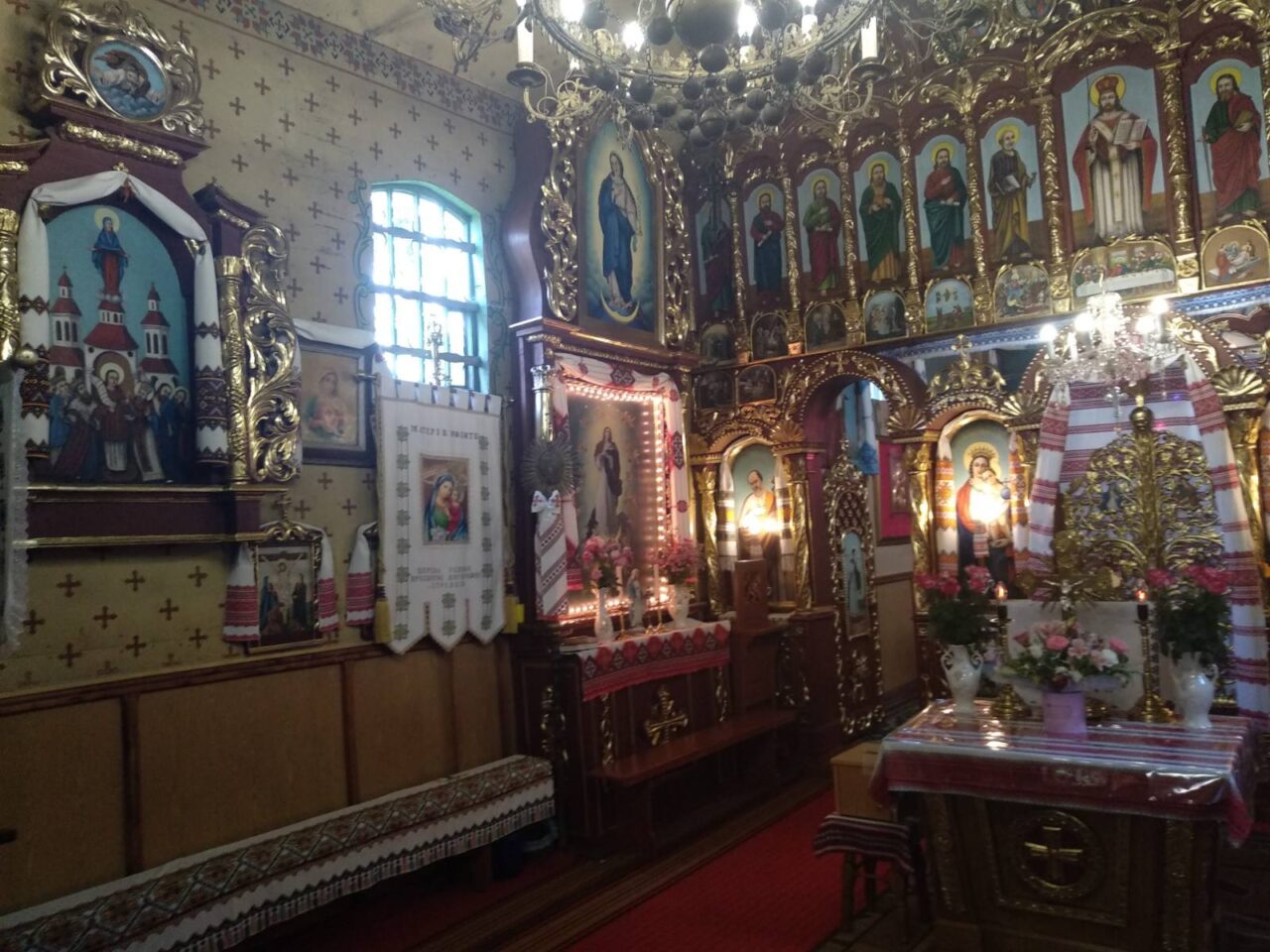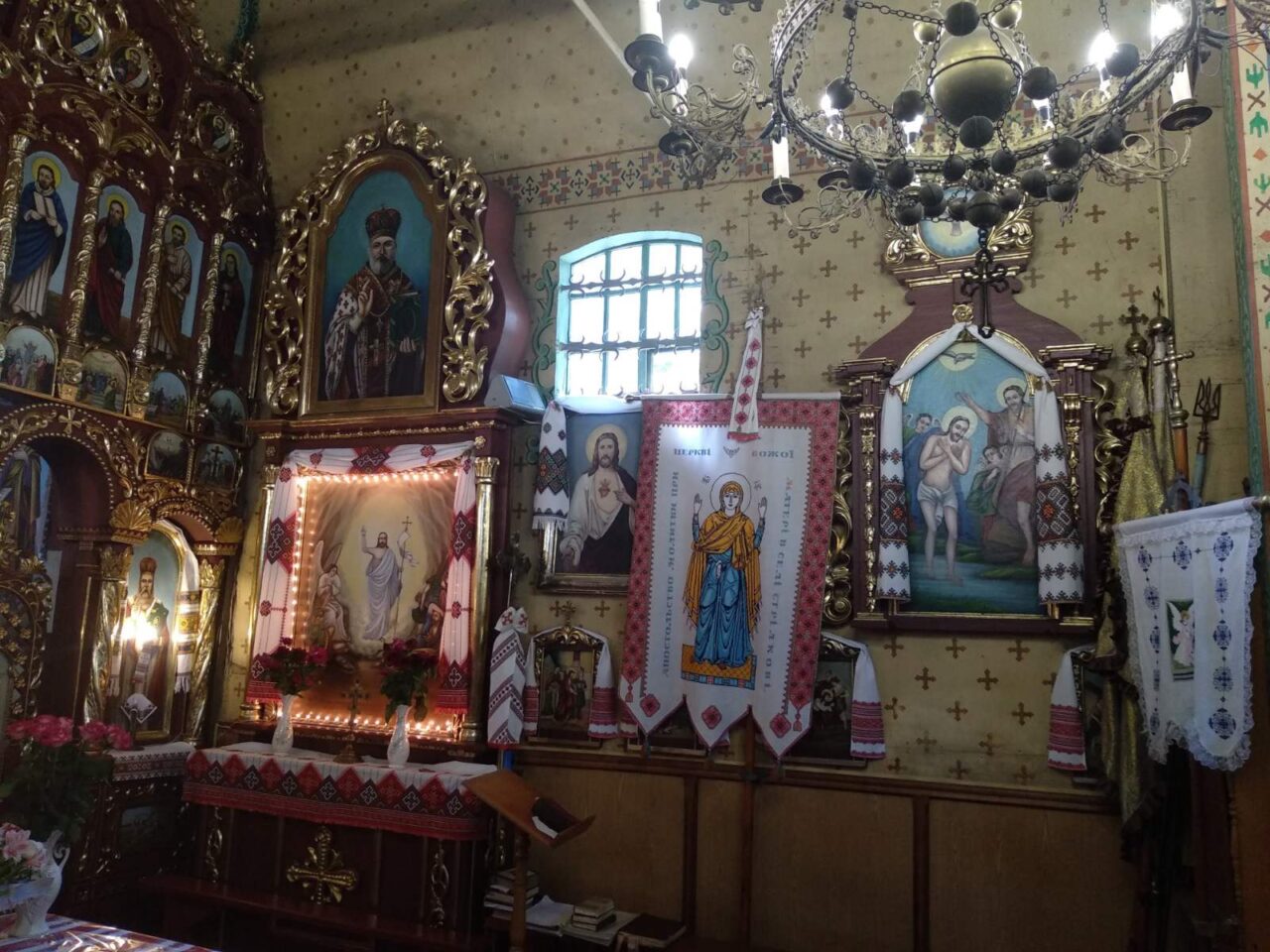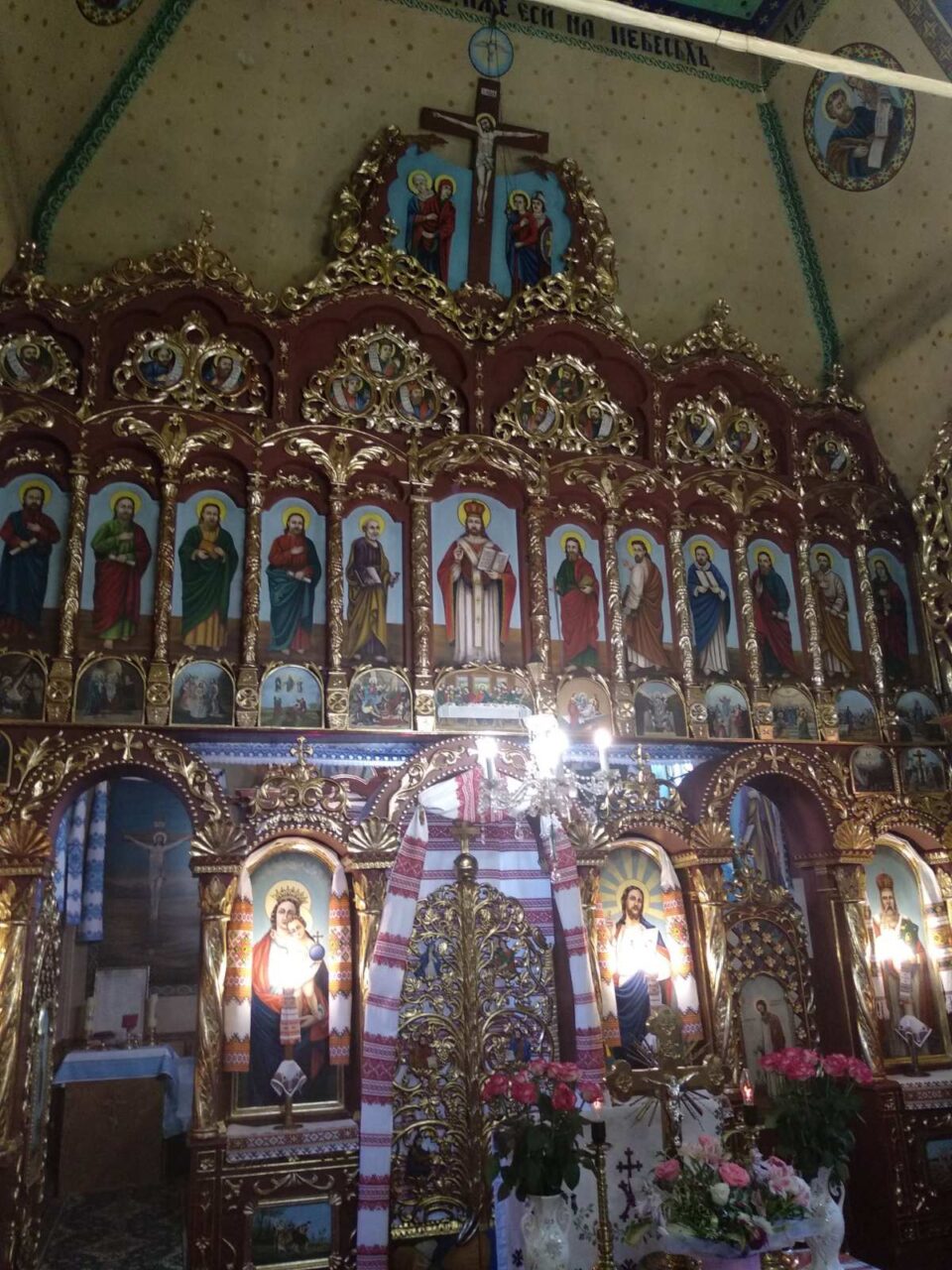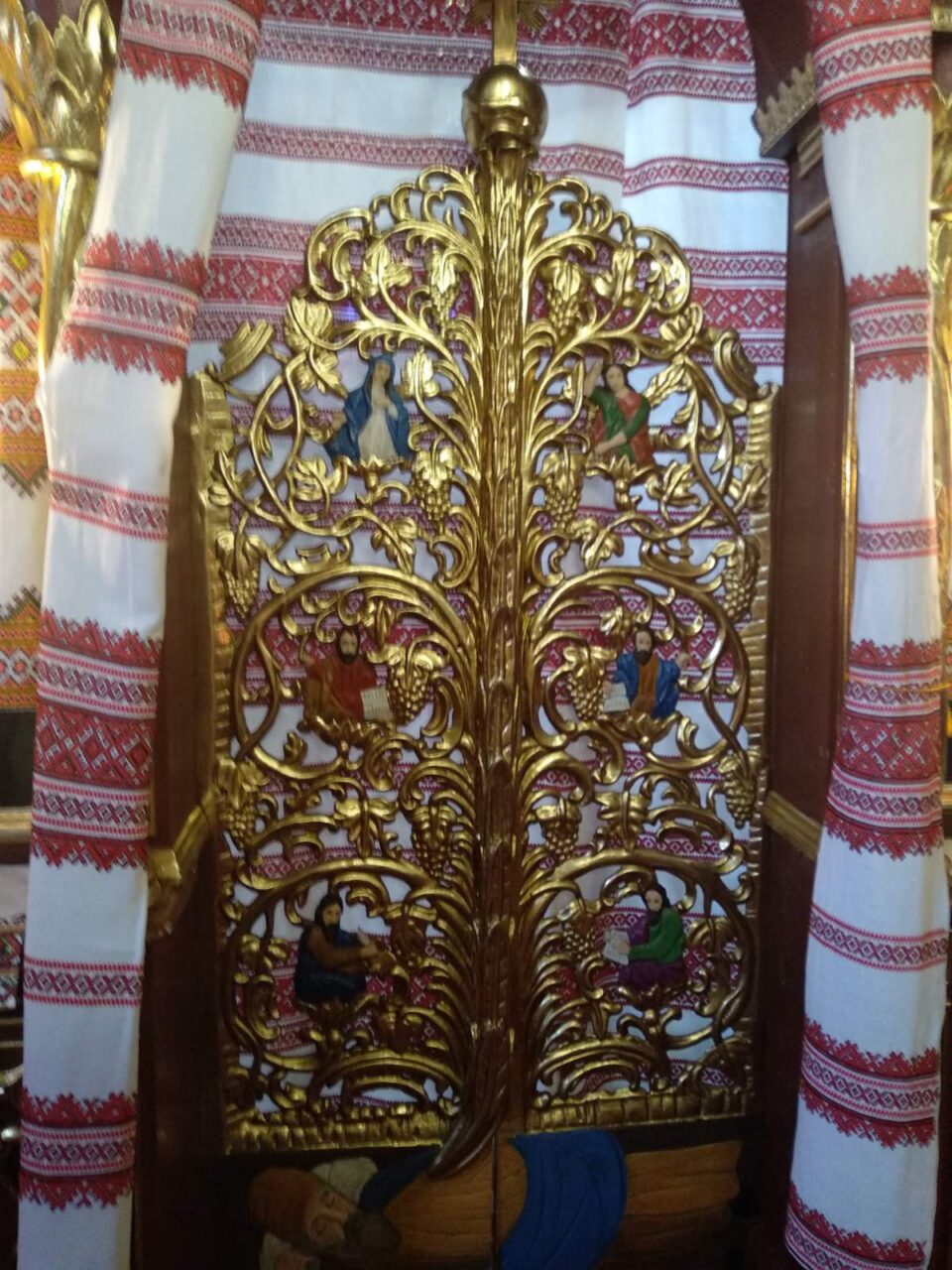Folk sacred architecture is always distinguished by its simplicity, turned into perfection by masters. And the fact can be proved by visiting the village of Strilkiv near Stryi. The ancient Boyko three-nave one-domed wooden St. Nicholas Church under a shingle roof (the inventory of the Stryi Diocese claims that it was constructed in 1654) has rested on a ship-like hill, among the ancient beeches and ashes, since 1650. This place lies at the intersection of important trade routes in the Carpathian Foothills and those leading to the West – Transcarpathia, Hungary, Austria and beyond. Therefore, the villages of this region have never been poor, and the church is still worthy of contemplation and admiration.
In the center of the village there is a well-tended source of healing water, and a steep staircase leading up the hill. After a long climb you will see a churchyard lying among the old trees and the architectural monument of national importance – the Church of St. Nicholas, as well as a bell tower, a cross and a sexton office.
The dome above the nave fascinates by its geometry and similarity to the shapes of the Carpathian Beskids at the background. This three-layered tent-like roof is crowned with a “blind” (windowless) round lantern with a top is the highest, while two others that are built slightly lower on the same level cover the altar and the gynecium. The gynecium is somewhat unproportionately large, since this part of the church was built in the 20th century. The adjecent part has an additional entrance on the north side. There is a little curiosity there: a figure of St. Nicholas in the glass display cabinet next to this entrance.
A few years later, the community carried out an internal restoration of the church – the interior logs were covered with a thin fiberboard and painted. The icon of the Mother of God of Perpetual Help is the most interesting and valuable object in the altar part of the church. The gynecium is covered with a gable roof with a fronton, whereas the altar – with a pyramid hip roof crowned with a beautiful cross on the ridge. The lowers logs of the walls are protected from precipitation by the ambulatory. Now it is a wide awning that surrounds the building and rests on pillars and consoles.
In the 1960s, a sacristy was appended on the south side of the altar and the old ambulatory was removed from the south side and replaced with a new one which is slightly wider than the original one, the log edges can be seen even today, they serve as a unique decoration of the porch. . The roof, the ambulatory and the walls above it are covered with shingles. The conscientious community preserved the old shingles which are renewed once in a while according to the ancient methods.
A magnificent pillar bell tower stands in the northwest part of the yard. Its frame is fastened with wooden pegs and lined with a vertical wooden siding, each plank ends with a carved shamrock. The narrow gap between the siding and the edge of the hipped shingle roof looks like horizontal arrowslits. As a result, the bell tower seems impregnable, though it was built later than the church. The strong and well-preserved foundation is protected from precipitation by the ambulatory.
The church is not only a place for the people to communicate with God. It is also a center of public life. Nothing is known about the founder of the church, but Baron Joseph Brunitski, a local landowner, collector and traveler, was its last patron up till 1939. Especially inquisitive travelers may see the Brunitsky family chapel in the cemetery near the church. The last pre-war canonical visit of the church took place back in 1909. The Church was in action as an Orthodox one during the difficult Soviet times, and in the early 1990s it obtained the UGCC status again.

